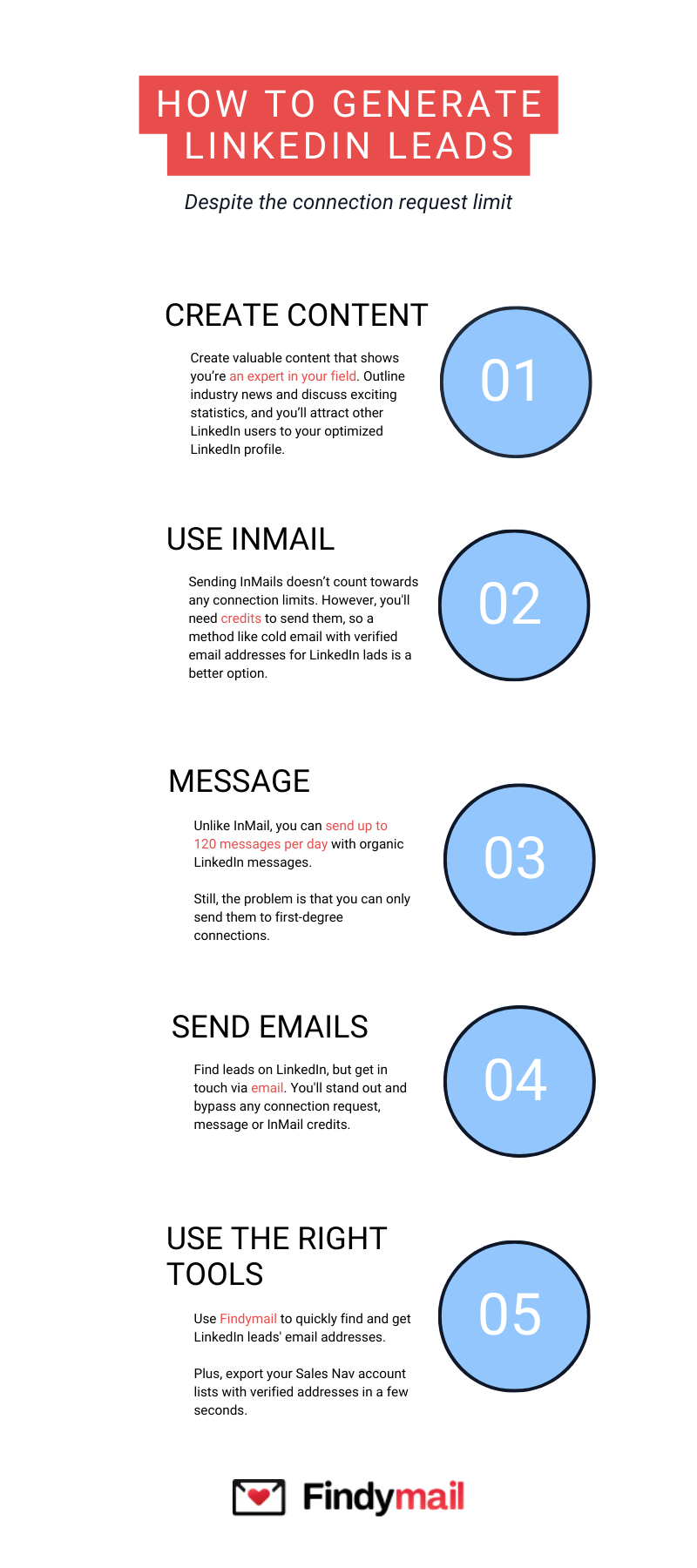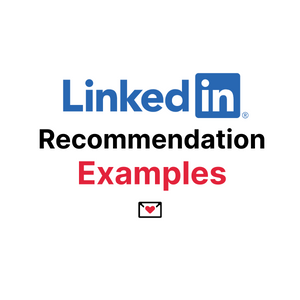Navigate LinkedIn's connection request limits with our comprehensive guide covering current weekly restrictions, proven bypass strategies, and alternative lead generation methods to maximize your networking potential.
A few years ago, you could send almost as many LinkedIn connection requests as you wanted.
Well, being limited to about 800 per week didn't mean unlimited, but it was a lot. Basically, it was a free-for-all, and LinkedIn lead generation was a lot easier.
However, in 2021, LinkedIn changed its policy to improve user experience. Since 2021, you were now limited to fewer connection requests per week, impacting the number of leads you could generate from the platform.
Understanding the LinkedIn connection request limit is crucial for sales professionals, recruiters, and business owners who rely on the platform for networking and lead generation.
This comprehensive guide covers everything you need to know about current weekly connection limits, maximum connections on LinkedIn, and proven strategies to overcome these restrictions.
Fortunately, all is not lost. There are some ways to generate leads despite the LinkedIn connection request limit!

What Is the Current LinkedIn Connection Request Limit in 2025?
On paper, LinkedIn wanted to make sure that members only receive relevant requests.
For this reason, the platform implemented a weekly connection limit that restricts the number of connection requests you can send within a given period.
The LinkedIn weekly connection limit also applies if many of your requests are left pending, unanswered, or marked as spam, which can trigger temporary restrictions on your account and affect your ability to send invitations.
How Many Connection Requests Can I Send on LinkedIn Per Week?
Currently, LinkedIn users get about 100 connection requests per week. These days, some experts speculate that the number is closer to 200 connection requests weekly, but it's still a considerable decrease from previous figures.
The exact number of connection requests per week varies based on several factors including your account age, activity level, acceptance rate of previous requests, and whether you have LinkedIn Premium or Sales Navigator subscriptions.
Understanding how many connection requests you can send helps you plan your networking strategy more effectively.
Daily Connection Requests Breakdown:
The weekly connection limit translates to approximately 15-30 daily connection requests for most users, though LinkedIn doesn't enforce strict daily quotas.
Instead, they monitor your weekly activity and sending invitations patterns to determine your personal limits.
LinkedIn Connection Request Limits by Account Type:
- Free LinkedIn Account: 100-200 connection requests per week
- LinkedIn Premium: Slightly higher limits with priority support for premium users
- LinkedIn Sales Navigator: Enhanced limits with advanced targeting features for connection requests premium access
- LinkedIn Recruiter: Professional-level limits for recruitment activities
The maximum connections on LinkedIn is 30,000 first-degree connections, but reaching this limit requires consistent networking over time while respecting weekly connection request limits.
What Are the Restrictions on Sending Invitations and LinkedIn Invitation Limits?
LinkedIn invitation limits go beyond just weekly quotas and include several restrictions on sending invitations that users must understand to avoid account penalties.
Key Invitation Limits and Restrictions:
Pending Request Limits: LinkedIn restricts users who have too many pending connection requests (typically over 3,000-5,000 pending invitations) from sending additional requests until some are resolved.
Acceptance Rate Monitoring: Users with consistently low acceptance rates may face reduced limits as LinkedIn interprets this as spammy behavior or poor targeting.
Geographic and Industry Targeting: Sending too many requests to users outside your geographic region or industry may trigger additional scrutiny and restrictions.
Message Requirements: LinkedIn may require personalized messages for connection requests to users outside your immediate network, adding to the character limit considerations.
Rapid Sending Penalties: Sending connection requests too quickly in succession can trigger temporary restrictions, even if you haven't hit your weekly limit.
What Happens If I Exceed the LinkedIn Connection Limit?
When you hit the LinkedIn connection limit or exceed weekly restrictions, LinkedIn implements several measures to restrict your networking activities.
Consequences of Exceeding Connection Limits:
Temporary Restrictions: The most common penalty is temporary restrictions that prevent sending connection requests for 24-48 hours after hitting the limit.
Account Warnings: LinkedIn may send warnings about your connection request patterns, especially if you frequently approach or exceed limits.
Extended Restrictions: Repeated violations can result in longer restrictions lasting several days or weeks, significantly impacting your networking capabilities.
Feature Limitations: In severe cases, LinkedIn may restrict other features like messaging, content posting, or profile visibility as additional penalties.
Account Review: Persistent violations may trigger manual account reviews that could result in more serious consequences including temporary account suspension.
LinkedIn's algorithm considers your connection request acceptance rate, pending requests ratio, and spam reports when determining your personal weekly limit and potential account restrictions.
How to Bypass the LinkedIn Connection Limit and Overcome Weekly Restrictions
Fortunately, there are several proven ways to bypass LinkedIn's connection restrictions and keep your LinkedIn lead generation efforts on track without violating platform policies.
1. Create Content to Get More Inbound LinkedIn Connection Requests
Creating more content is one of the best ways to bypass LinkedIn's limits by attracting prospects to connect with you, rather than you initiating all the connections.
When you create valuable content that shows you're an expert in your field, outlines industry news, and discusses exciting statistics, you'll attract other LinkedIn users to your optimized LinkedIn profile. In turn, this results in more inbound connection requests from other users.
This approach allows you to connect with people without using any of your connection requests per week allocation. Remember, while you create content once, it keeps delivering value and attracting connections over time.
Effective Content Strategies to Attract Connection Requests:
Industry Insights and Analysis: Share your expertise on industry trends, market analysis, and professional insights that position you as a thought leader and naturally attract networking opportunities.
Educational Content: Create how-to guides, tutorials, and educational posts that provide value to your target audience and encourage them to connect for more insights.
Personal Professional Stories: Share authentic stories about your career journey, lessons learned, and professional experiences that resonate with your audience and build trust.
Engaging Question Posts: Ask thoughtful questions that encourage discussion and engagement, naturally leading to connection requests from participants in the conversation.
Visual Content and Infographics: Use eye-catching visuals, charts, and infographics to present data and insights in an easily digestible format that gets shared and attracts connections.
Content creation not only helps you overcome LinkedIn limits but also builds your personal brand and establishes credibility with potential connections before they even reach out to you.
2. Use LinkedIn InMail to Overcome Connection Restrictions
Another effective way to bypass the LinkedIn weekly connection limits is to use LinkedIn's InMail feature. Sending InMails doesn't count towards any connection limits and provides direct access to prospects.
InMail offers several advantages including higher response rates than regular emails or standard LinkedIn messages, and the ability to reach prospects without existing connections.
However, InMail is a paid feature with limitations. You only get a certain allotment of messages during every billing cycle, and if you need more InMail credits, you'll need to pay for additional credits.
LinkedIn InMail Credits by Subscription Type:
Your InMail allocation depends on your LinkedIn account type. When you subscribe to the Premium Career plan, you'll only get 5 InMail credits every month. With Sales Navigator, you'll get 50 credits during each monthly billing cycle.
- LinkedIn Premium Career: 5 InMail credits per month for premium users
- LinkedIn Premium Business: 15 InMail credits per month
- LinkedIn Sales Navigator Core: 20 InMail credits per month
- LinkedIn Sales Navigator Advanced: 50 InMail credits per month for connection requests premium access
- LinkedIn Recruiter Lite: 30 InMail credits per month
InMail Limitations to Consider:
Credit Recovery System: You won't be able to send another InMail message to a LinkedIn member until they've responded to your first message.
While you'll get your credit back if they don't respond within 90 days, it's a credit that remains unavailable during that period.
Cost Per Message: Each InMail credit represents a significant cost per contact compared to other outreach methods, making it less scalable for high-volume prospecting.
Response Requirements: The one-message-per-contact limitation until response means you can't follow up with non-responders, limiting your ability to nurture prospects effectively.
LinkedIn InMail Best Practices:
Personalized Subject Lines: Create compelling, personalized subject lines that clearly state your value proposition and reason for reaching out to maximize open rates.
Value-First Approach: Lead with how you can help the recipient rather than what you want from them, significantly increasing response rates and engagement.
Professional Tone: Maintain a professional yet conversational tone that reflects your personal brand and industry standards while respecting the recipient's time.
Clear Call-to-Action: Include a specific, actionable next step that makes it easy for recipients to respond or engage with your message.
While InMail can effectively help you bypass LinkedIn connection limit restrictions, considering the cost and limitations, it should be used strategically for high-value prospects.
3. Use LinkedIn Messages for Existing Connections
Unlike InMail, you can send up to 120 messages per day with organic LinkedIn messages to your existing first-degree connections, providing another way to overcome LinkedIn limits.
While you can only send these messages to first-degree connections, if you've already built a substantial network, you can use Messages to nurture relationships and generate opportunities without using additional connection requests.
LinkedIn Daily Message Limits and Character Restrictions:
- Standard Messages to Connections: Up to 120 messages per day to first-degree connections
- Group Messages: Limited based on group size and activity level
- LinkedIn Message Limit: 8,000 characters per message for detailed communications
- Message Character Limit: No strict character limit for individual messages to connections
Understanding the Character Limit for LinkedIn Communications:
The character limit varies depending on the type of LinkedIn communication. Connection requests have a 300-character limit for personalized messages, while direct messages to connections allow up to 8,000 characters, providing ample space for detailed conversations and value-driven outreach.
LinkedIn Messages work best for nurturing existing relationships, following up on previous conversations, sharing relevant content with your network, and maintaining engagement with warm prospects who have already accepted your connection requests.
4. Find Leads on LinkedIn, but Send Emails to Bypass All Limits
Email outreach provides the most effective solution to bypass LinkedIn connection limit restrictions while maintaining scalable lead generation capabilities.
Email solves many of the problems and drawbacks of LinkedIn connections and InMail by offering unlimited daily volume, advanced automation capabilities, and comprehensive analytics tracking.
Advantages of Email Over LinkedIn Connection Requests:
No Daily or Weekly Limits: Unlike LinkedIn's connection request restrictions, email allows you to reach hundreds of prospects daily with proper setup and inbox warming.
Advanced Analytics: Email platforms provide detailed metrics including open rates, click-through rates, response rates, and engagement tracking that far exceed LinkedIn's analytics capabilities.
Automated Follow-up Sequences: Set up sophisticated drip campaigns and automated follow-up sequences that nurture leads over time without manual intervention.
Cost-Effective Scaling: Email outreach typically costs significantly less per contact than LinkedIn Premium subscriptions or InMail credits, making it more suitable for high-volume prospecting.
Better Personalization: Email platforms offer advanced merge tags and dynamic content capabilities for highly personalized outreach at scale.
No Character Limit Restrictions: Unlike LinkedIn's message character limit, emails can be as long or short as needed to effectively communicate your value proposition.
The main challenge with email outreach is obtaining verified email addresses for your LinkedIn prospects, which is where professional email finding tools become essential.
5. Use Professional Email Finding Tools to Bypass LinkedIn Restrictions
Professional email finder tools provide the most scalable solution for overcoming LinkedIn limits by allowing you to identify prospects on LinkedIn and reach them via email.
FindyMail allows you to find emails on LinkedIn quickly and easily. You can even export Sales Navigator email addresses in bulk, effectively bypassing all LinkedIn connection and messaging restrictions.
FindyMail automatically cleans the data and verifies email addresses, ensuring high deliverability rates and protecting your sender reputation from bounces and invalid addresses.
Professional Email Finding Features:
LinkedIn Integration: Extract email addresses directly from LinkedIn profiles, Sales Navigator searches, and company pages without using connection requests.
Bulk Email Export: Process hundreds of LinkedIn profiles simultaneously to build comprehensive email lists for outreach campaigns.
Email Verification: Automatically verify email addresses to ensure high deliverability and protect sender reputation from hard bounces.
CRM Integration: Seamlessly integrate with popular CRM platforms and sales tools for streamlined workflow management and lead tracking.
Chrome Extension: Use browser extensions to find emails while browsing LinkedIn profiles and company websites in real-time.
Top Email Finder Tools for LinkedIn Prospecting:
Findymail: Advanced B2B email discovery with LinkedIn integration and real-time verification capabilities for premium users.
Hunter.io: Domain-based email finding and verification with LinkedIn Chrome extension for individual prospect research.
Apollo: Comprehensive sales intelligence platform combining email finding with LinkedIn prospecting and sequence automation.
ZoomInfo: Enterprise-level contact database with extensive LinkedIn integration and advanced search capabilities.
Clearbit: Email enrichment and verification tools for enhancing existing contact data with verified business email addresses.
Advanced Strategies to Maximize LinkedIn Networking Despite Connection Limits
How LinkedIn Premium Affects Connection Requests and Networking Capabilities
While LinkedIn Premium doesn't dramatically increase your weekly connection request limits, it provides several valuable features that help maximize networking efficiency within existing restrictions.
LinkedIn Premium Benefits for Connection Requests:
Extended Network Visibility: Premium users can see who's viewed their profile beyond the standard limit, identifying potential connection opportunities without initiating contact.
Advanced Search Filters: Access to detailed search filters helps identify higher-quality prospects before using valuable connection requests, improving acceptance rates.
InMail Credits: Direct messaging capabilities that completely bypass connection requirements, providing an alternative outreach method for premium users.
Priority Customer Support: Faster resolution of account issues, including assistance with connection limit concerns and account restrictions.
Enhanced Profile Features: Premium badges and expanded profile sections that increase credibility and connection acceptance rates.
LinkedIn Sales Navigator Advantages for Connection Requests Premium Access:
LinkedIn Sales Navigator provides the most comprehensive tools for professional networking and lead generation within LinkedIn's connection framework.
Enhanced Lead Search: Advanced Boolean search capabilities and AI-powered lead recommendations based on your ideal customer profile and networking goals.
TeamLink Leverage: Access your team members' networks to identify mutual connections and warm introduction opportunities, reducing reliance on cold connection requests.
CRM Integration: Sync prospects and activities with existing sales tools for better pipeline management and relationship tracking.
Advanced Analytics: Detailed insights into prospect engagement patterns, company updates, and optimal outreach timing.
Lead Builder: Automated lead list creation based on your specified criteria, helping identify the highest-value prospects for your limited connection requests.
Smart Links: Track engagement with shared content and resources, providing conversation starters for connection requests and follow-up messages.
Building Strategic Relationships to Maximize Connection Value
Instead of focusing solely on quantity, strategic relationship building helps you maximize the value of each connection request within LinkedIn's weekly limits.
Quality Over Quantity Approach:
Target High-Value Prospects: Focus your limited connection requests on prospects who fit your ideal customer profile and demonstrate high conversion potential based on their activity and engagement.
Research Before Connecting: Invest time researching prospects' backgrounds, recent activity, shared connections, and current challenges to craft highly personalized connection requests that stand out.
Leverage Mutual Connections: Prioritize warm introductions through mutual connections instead of cold connection requests whenever possible, as these have significantly higher acceptance rates.
Engage Before Connecting: Like, comment, and share prospects' content for several days before sending connection requests to build familiarity and increase acceptance likelihood.
Follow Up Strategically: Develop a systematic follow-up process for accepted connections that moves relationships toward business opportunities efficiently.
Alternative LinkedIn Networking Strategies to Reduce Connection Request Dependency
LinkedIn Groups and Communities:
Participating in relevant LinkedIn groups allows you to engage with prospects and build relationships without using any connection requests. Share valuable insights, answer questions, and build credibility through consistent group participation.
LinkedIn Events and Webinars:
Attend and host LinkedIn events to network with prospects in natural settings where connection requests feel more organic and are more readily accepted by participants.
Company Page Engagement:
Engage with prospects' company pages, team announcements, and corporate content to build visibility and rapport before sending connection requests, improving acceptance rates.
LinkedIn Newsletter Strategy:
Create and publish a LinkedIn newsletter to attract subscribers from your target audience, building relationships and generating inbound connection requests without using your weekly allocation.
LinkedIn Live and Video Content: Use LinkedIn's video features to create engaging content that attracts prospects and positions you as a thought leader, naturally generating inbound networking opportunities.
Best Practices for Managing LinkedIn Connection Request Limits and Invitation Restrictions
Monitoring Your Connection Request Performance and Weekly Usage
Essential Metrics to Track:
Acceptance Rate: Monitor the percentage of connection requests that are accepted to identify areas for improvement in your messaging and targeting strategies.
Response Rate: Track how many accepted connections respond to your follow-up messages and engage in meaningful business conversations.
Pending Requests: Keep careful track of pending requests to avoid hitting LinkedIn's pending invitation limits and potentially triggering additional restrictions.
Weekly Usage Patterns: Monitor your weekly connection limit usage to pace yourself effectively and avoid hitting limits too early in the week, which could impact your networking momentum.
Geographic and Industry Distribution: Track the diversity of your connection requests across different regions and industries to avoid triggering LinkedIn's spam detection algorithms.
Optimizing Connection Request Messages Within Character Limits
Understanding LinkedIn's Message Character Limit:
LinkedIn allows up to 300 characters for personalized connection request messages. This character limit for messages requires concise, compelling copy that clearly communicates your value proposition while respecting the recipient's time and attention.
Effective Connection Request Templates for Maximum Impact:
Industry Connection (287 characters): "Hi [Name], I noticed we're both in [industry] and share an interest in [specific topic]. I'd love to connect and share insights about [relevant trend/challenge]. Looking forward to connecting!"
Mutual Connection (294 characters): "Hi [Name], [Mutual connection] suggested we connect given our shared interest in [topic/industry]. I've been following your work at [Company] and would love to learn more about your experience."
Content Engagement (289 characters): "Hi [Name], I really enjoyed your recent post about [specific topic]. Your insights on [detail] were particularly valuable. Would love to connect and continue the conversation about [subject]."
Event Follow-up (276 characters): "Hi [Name], Great meeting you at [event name]. I enjoyed our conversation about [topic discussed]. I'd love to stay connected and continue exploring [relevant business topic] together."
Advanced Message Personalization Within Character Limits:
Research-Based Personalization: Reference specific details from their profile, recent posts, or company news to demonstrate genuine interest and research effort.
Value Proposition: Clearly articulate what value you can provide to their business or career within the limited character count.
Mutual Interest Identification: Highlight shared connections, interests, or experiences that create natural conversation starters.
Clear Intent: Be transparent about your reason for connecting while maintaining a professional, non-salesy tone.
Avoiding LinkedIn Restrictions and Account Limitations
Proactive Strategies to Prevent Restrictions on Sending:
Gradual Ramp-Up: If you're new to LinkedIn or returning after a break, gradually increase your connection request volume rather than immediately hitting daily limits, which can trigger spam detection.
High Acceptance Rate Maintenance: Focus on quality targeting and personalized messages to maintain an acceptance rate above 70%, which signals to LinkedIn that your requests are welcomed by recipients.
Avoid Spam Triggers: Don't use overly promotional language, excessive capitalization, suspicious links, or template-like messages that might trigger LinkedIn's spam detection algorithms.
Consistent Account Activity: Maintain regular activity beyond just sending connection requests, including posting original content, engaging with others' posts, and keeping your profile updated and active.
Monitor Account Health: Keep track of any warnings, restrictions, or unusual account behavior and adjust your strategy immediately to maintain good standing with LinkedIn.
Diversify Networking Activities: Don't rely solely on connection requests for networking; engage in groups, comment on posts, and participate in LinkedIn's community features.
Measuring Success Beyond Connection Request Limits
Key Performance Indicators for LinkedIn Lead Generation
Metrics That Matter More Than Connection Volume:
Quality Connections: Focus on connecting with prospects who fit your ideal customer profile rather than accumulating connections for quantity alone, ensuring each connection has genuine business potential.
Engagement Rate: Measure how actively your connections engage with your content, respond to your messages, and participate in meaningful business conversations.
Conversion Rate: Track how many LinkedIn connections convert to sales qualified leads, product demos, meetings, or actual customers over time.
Pipeline Value: Monitor the total monetary value of business opportunities generated through LinkedIn networking efforts, regardless of connection volume.
Relationship Depth: Assess the quality and depth of relationships built through LinkedIn interactions, focusing on long-term business value rather than short-term metrics.
Content Performance: Track how your LinkedIn content performs in attracting inbound connection requests and generating organic networking opportunities.
Long-term LinkedIn Strategy for Sustainable Growth
Building a sustainable LinkedIn presence requires balancing connection growth with content creation, engagement, and relationship nurturing to create lasting business value that transcends short-term connection limits.
Sustainable Growth Elements:
Content Strategy Development: Create a consistent content calendar that positions you as a thought leader and naturally attracts inbound connection requests from your target audience.
Community Building Focus: Concentrate on building a engaged community around your expertise rather than just accumulating connections, fostering deeper business relationships.
Value Creation Priority: Focus on providing genuine value to your network through insights, introductions, resources, and expertise sharing rather than purely promotional content.
Relationship Maintenance Systems: Develop systematic approaches for staying in touch with your network and nurturing relationships over time through regular, valuable interactions.
Multi-Channel Integration: Integrate LinkedIn efforts with email marketing, content marketing, and other channels for comprehensive lead generation that doesn't rely solely on LinkedIn's platform.
Long-term Relationship Investment: View LinkedIn networking as a long-term relationship investment rather than a short-term lead generation tactic, building sustainable business growth.
Ultimately, LinkedIn remains an excellent platform for sourcing leads, but combining it with email outreach and tools like Findymail provides the most effective way to bypass LinkedIn's connection request limit while building sustainable business relationships.
Understanding and working strategically within LinkedIn's connection request limits while leveraging alternative networking approaches ensures consistent lead generation and meaningful relationship building on the platform.
To learn more about maximizing your LinkedIn networking potential, get started with a comprehensive strategy that balances platform restrictions with business growth objectives.
Frequently Asked Questions About LinkedIn Connection Request Limits
How can I bypass LinkedIn connection request limits legally?
You can legally overcome LinkedIn limits by creating engaging content to attract inbound requests, using LinkedIn InMail credits, leveraging email outreach with verified addresses, focusing on quality networking in groups and events, and building strategic relationships that maximize the value of each connection within your weekly allocation.
Do pending connection requests count toward my weekly limit?
Yes, pending connection requests count toward your weekly limit until they are either accepted, declined, or withdrawn.
Having too many pending invitations can also trigger additional restrictions on your account, so it's important to monitor and manage your pending requests carefully.
How does LinkedIn Premium affect connection requests and networking?
LinkedIn Premium doesn't dramatically increase connection request limits but provides valuable features like InMail credits, advanced search filters, and enhanced profile visibility.
Premium users benefit from better targeting tools and alternative outreach methods that help maximize networking efficiency within existing connection limits.
What are the restrictions on sending invitations on LinkedIn?
LinkedIn invitation limits include weekly connection request quotas, pending request limits (typically 3,000-5,000), acceptance rate monitoring, and geographic/industry targeting restrictions.
Users with low acceptance rates or too many pending invitations may face additional restrictions on sending new connection requests.






![How to Use LinkedIn Sales Navigator [Definitive Guide]](/blog/content/images/size/w300/2024/03/souvik-banerjee-JLj_NbvlDDo-unsplash.jpg)